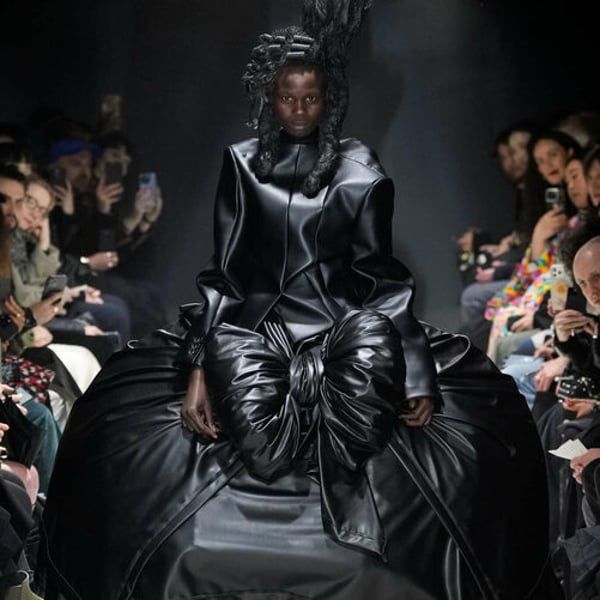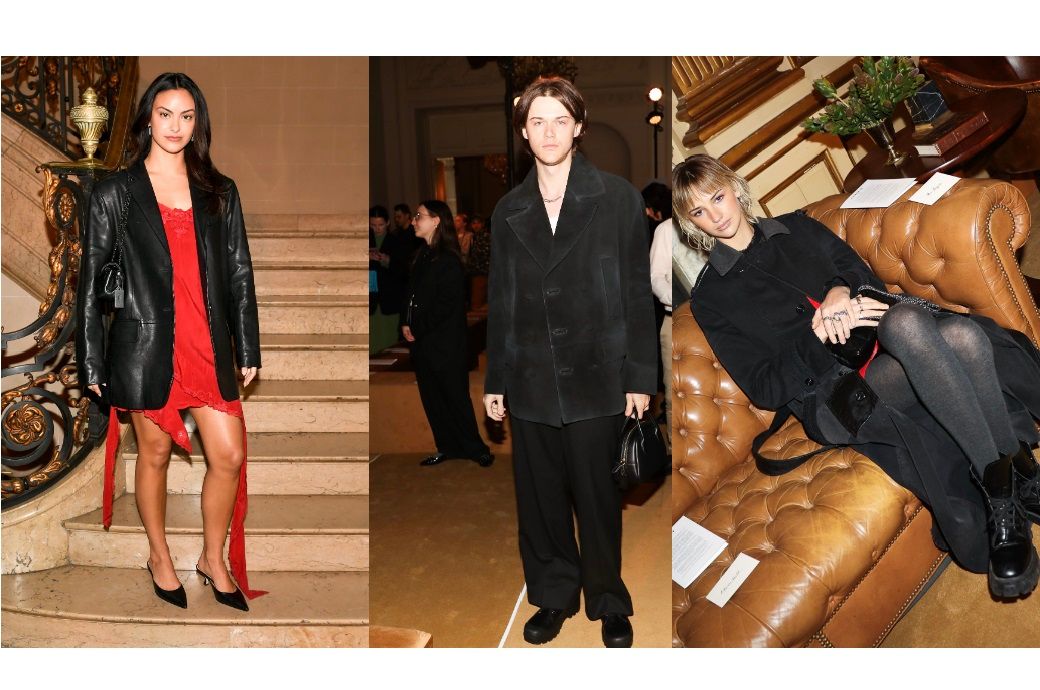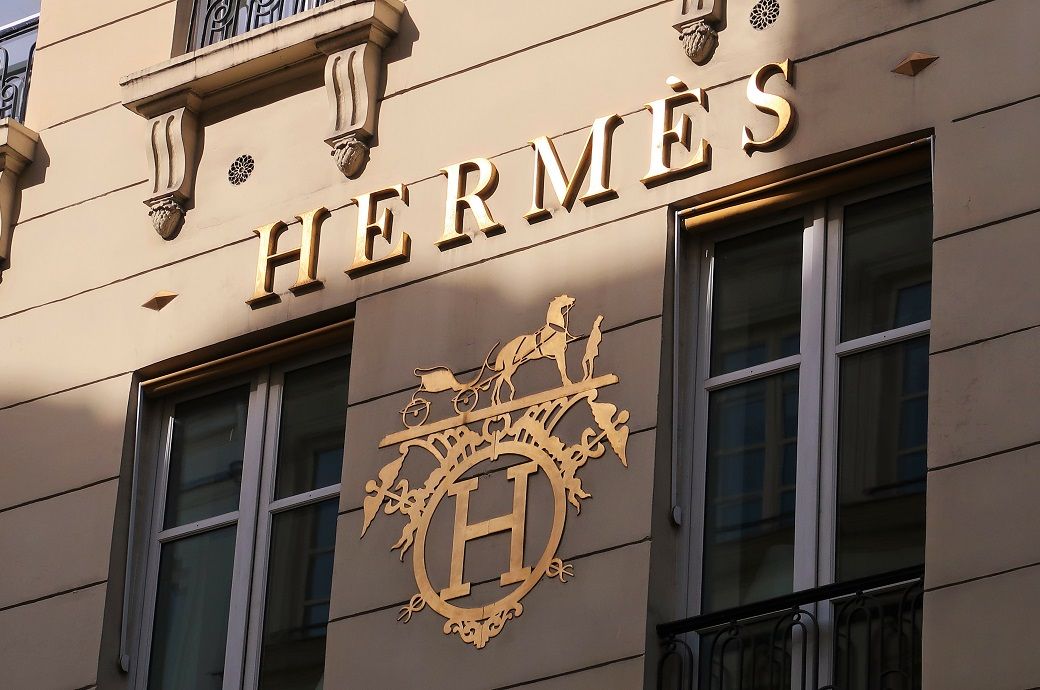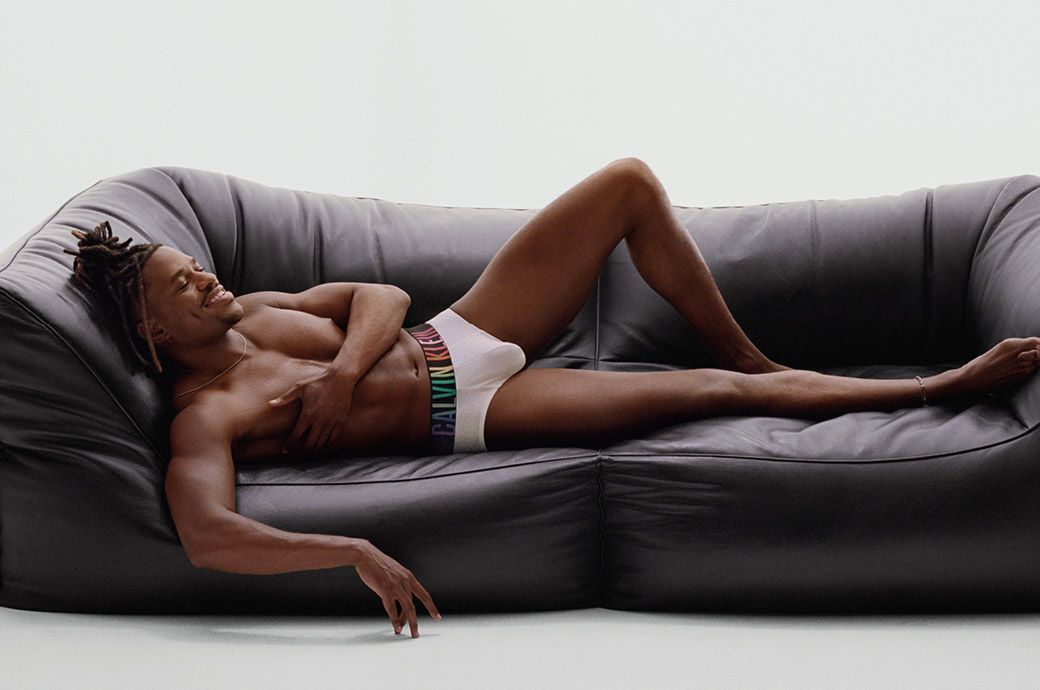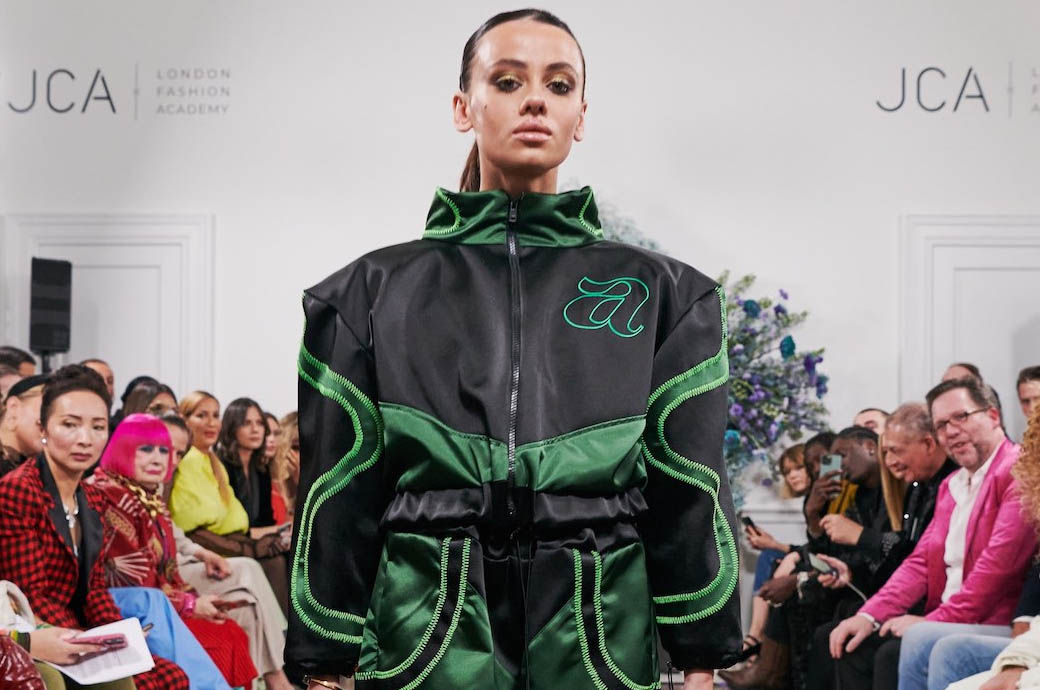Translated by
Nicola Mira
Published
March 4, 2024
Once again, Japanese creativity shines at Paris Fashion Week for its inventiveness and innovation. As demonstrated on Saturday by the women's ready-to-wear collections for Fall/Winter 2024-25 from three of the most avant-garde Japanese brands. Junya Watanabe, Noir by Kei Ninomiya and Comme des Garçons put on impressive shows, many of their creations resembling works of art.
The Artistic Women Warriors of Junya Watanabe
Straitjackets or armor? Fashion or art? Once again, Junya Watanabe has blurred fashion codes, further driving experimentation in haute couture. He built on the extraordinary disassembly and reassembly concept he developed last season, and continued down this path, working with a series of wardrobe essentials that he dismantled and then reassembled in entirely new and spectacular ways.
In these seemingly mutant garments, Watanabe introduced rigid geometric elements such as giant vinyl triangles that he incorporated into layers of tweed and wool, accentuating one shoulder or creating empty sections.
She fused these excrescence-like forms, made of black leather, into a dark winter wardrobe that included jackets, pant-skirt hybrids, coats and dresses. Its geometric shapes skewed and emphasized the silhouette while adding power, for example in the form of large acute angles that emerge outward from the surface of the garment, or leather yokes that protect the shoulders and torso.
Huge interlocking swaths of neoprene created a sculptural shell around the models, while enormous down-filled noodles transformed a top into a giant triple buoy wrapped around the torso. Elsewhere, voluminous layers of Napa or crocodile-effect leather transformed one coat into an accordion and transformed another into a work of contemporary art. Trench coats, of which only the basic structure remained, spread like a tent over pleated floral dresses, or bloomed into long strips of leather that fell to the ground like petals.
Watanabe worked with all types of padded and protective materials, inserting them in a patchwork pattern into jackets, vests and coats to create a series of galactic warrior uniforms. He also played with leather belts, adding several to the waist of a dress, using them as a support structure, or wrapping them around the waist and neck of other garments. Several shiny straps with silver studs were worn like a holster over the shoulder.
Rei Kawakubo's “anger” against Comme des Garçons
Leather and oversized volumes also played an important role at Comme des Garçons, which showed a powerful collection of striking total looks in black, except for the last model, who wore a blooming white wedding dress, characterized by transparent bags filled with colored tulle. flesh worn like a puffy petticoat under a full skirt.

Kawakubo used the iconic rebellious biker jacket to express his “anger”, the title of the Comme des Garçons collection for next winter. He has decontextualized the biker jacket to better deconstruct it and then reassemble it into stunning formal dresses.
“This collection expresses my current state of mind. “I am angry with the whole world and with myself in particular,” said the prominent Japanese designer, who was inspired by 18th-century French aesthetics. The extravagance of the opulent fashion of the Versailles court gave him the means to transpose his feelings of anger and darkness into superlative contemporary costumes, infused with a rock edge.
The thick, shiny black leather of a biker jacket became the filler for crinolines, oversized hoop dresses with extra volume at the hips, kimono sleeves, double skirts and petticoats, as well as bows, ruffles, ribbons, lace and other decorations. Some of the looks were stained with large paint splotches. Layers of fine leather overlapped each other, creating volume and movement. Huge leather roses embroidered with pearls adorned a coat. Some details were extremely evocative, such as the chains and barbed wire prints on certain leather dresses, on one of which a series of zippers created a yoke structure.
The models who wore these extravagant outfits were coiffed with enormous black or red wigs, like the nobles and courtesans of the 18th century in the purest Marie Antoinette style. As they walked down the runway, they stopped before strutting and twirling. From beginning to end, the show was accompanied by two famous Beethoven piano sonatas, the Moonlight Sonata and Opus 111. The melody was both furious and solemn, underscoring Kawakubo's intention.
It is not the first time that Kawakubo has created a collection at this time. For example, he developed the Fall/Winter 2016-17 collection around the theme of “18th century punks.”
Kei Ninomiya opts for color in Noir
Kei Ninomiya also presented a series of spectacular three-dimensional looks for his Noir brand. But he largely eschewed his usual black palette, which he used only for a handful of outfits, and instead studied the properties of color and light.

Ninomiya has explored optical effects and reflective materials, viewing his creations as if through a prism, refracting light into all the colors of the rainbow.
Several fairytale looks featured shades of red, orange, yellow, green, blue, indigo and violet, such as the blouses and wrap skirts made of taffeta feathers and the tunic woven in a harmonious mix of small bands of colored plastic. Ninomiya used the same hues to create a cascade of small cut-out flowers that she gathered on delicate camouflage dresses and large necklaces made of small squares of PVC, layered like a harness over olive green quilted satin dresses and coats.
She played with primary colors to create cheerful, brightly colored looks using woven scoubidou threads, or turned to the same plastic thread to make flowers that she sewed among other white tulle flowers into dresses and corsets that had the light feel of clouds. She used multicolored rosettes cut from clear plastic sheets to make capes and dresses reminiscent of the stained glass windows of a Gothic cathedral.
For her grand finale, Ninomiya created a mini cape that covers her entire head and face, and a sparkling dress made of crystals arranged like prisms. Iridescent rainbow hues glowed within them, changing color depending on the way the stones caught the light or depending on the color of the garment beneath them. For example, a white T-shirt emitted a pink and blue glow, which transformed into yellow, green and orange on black shorts. It was poetic and magical.
Copyright © 2024 FashionNetwork.com All rights reserved.

